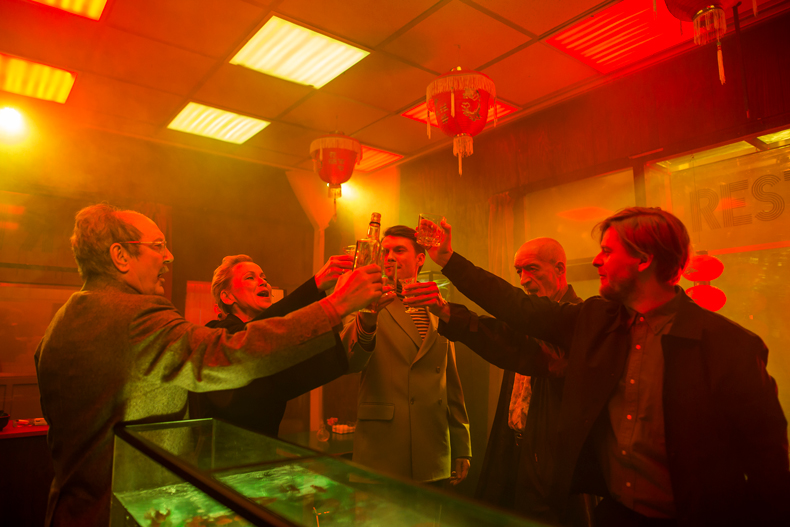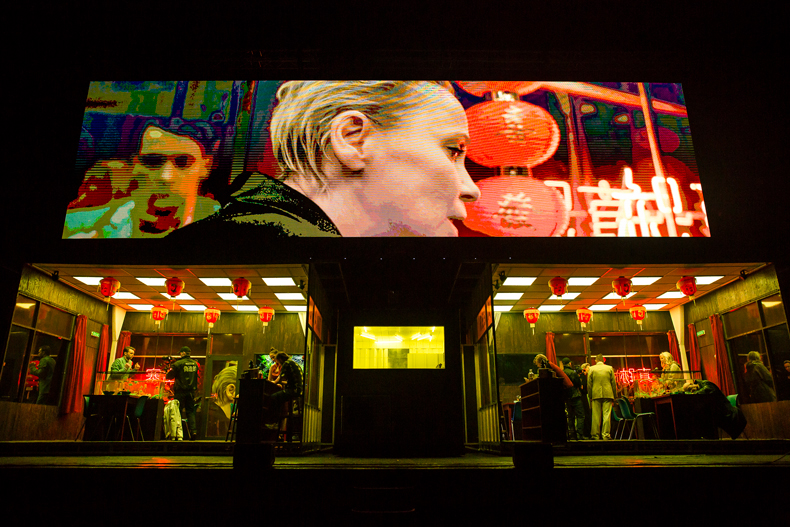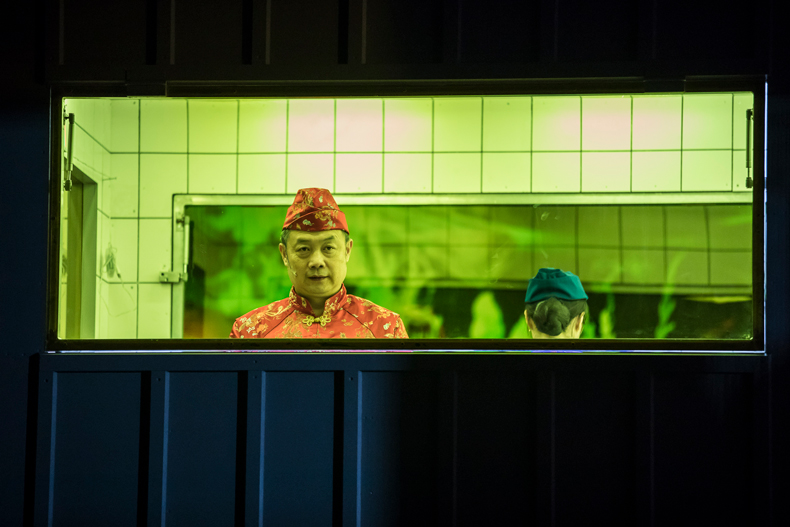One day in the 1980s, Pei-Shen Qian, a janitor and struggling artist, was selling his paintings on a Manhattan sidewalk when he caught the eye of an art dealer, José Carlos Bergantiños-Diaz, who offered Qian $200 for a piece in the style of a famous Abstract Expressionist.
In the years that followed, Qian churned out imitations of Pollock, Rothko, Motherwell and other American painters for Bergantiños-Diaz and his partner, Glafira Rosales. After bumping into Ann Freedman, president of Knoedler & Co, at a cocktail party, Rosales was soon selling them for hundreds of thousands of dollars to one of New York’s most prestigious galleries, where they were presented as the real thing. Knoedler sold one ‘Rothko’ for more than $8 million. When it turned out to be by Qian, the scam collapsed.
This is the true story at the heart of ROHTKO, a four-hour play from Latvia’s Dailes Theatre. But the work barely touches on the Knoedler debacle; neither is it really about Rothko, who appears, with his long-suffering wife Mell, in only three scenes. It is instead a series of linked vignettes that drift between ideas and decades. Much of it is a soft-focus satire of the 21st-century art world, featuring gallerists, curators, artists and journalists who more often than not are left unnamed. Everyone we meet is smug and self-righteous and smokes constantly, except for a fourth-wall-breaking hipster journalist, who is smug and self-righteous and vapes.

Plot is not of paramount importance to ROHTKO’s director, Łukasz Twarkowski, who scored a critical hit in London earlier this year with his adaptation of Olga Ravn’s sci-fi novel The Employees at the Southbank Centre. Tricksy camerawork, sultry neon and bowel-wobbling electro bass seem to be his stock in trade, and ROHTKO is no exception: it has the feel of a hypnotic four-hour music video. Lubomir Grzelak’s score is, at times, all that glues it together.
In a review of the London restaurant Mr Chow, Marina O’Loughlin once wrote: ‘The point is, apparently, the vibe, baby.’ The point of ROHTKO is, apparently, the vibe – and the vibe, incidentally, is Mr Chow. Not the London eatery, but the New York spin-off that became a hangout for the art crowd: in the 1980s you might have spotted Basquiat, Warhol or Rothko himself there, nibbling on a spring roll. The restaurant is the real star of ROHTKO, brought to seedy life through Fabien Lédé’s magnificent, modular set design. If the New York branch is a copy of the original, which was established in London in 1968, this, fittingly enough, is a copy of a copy. In the second act it’s whisked away, replaced by a white-walled gallery where video-screens project a CGI/NFT replica of the restaurant, which is in turn filmed and put on another screen, at which point I began glancing at my watch.
There are many interesting questions about art, authorship, originality and exploitation that ROHTKO almost gets around to asking. The set splits and spins and tessellates, its segments pushed around by an army of technicians, while the actors drift elegantly from room to room, their subtly choreographed movements underpinned by the music. One perfect scene, lasting perhaps 15 minutes, almost justifies the whole production. It involves two couples, inhabiting a split set. To the left, in the 1960s, Rothko (Juris Bartkevičs) is seething to Mell (Vita Varpina) about the commission he has received to design murals for the Four Seasons restaurant in Manhattan; to the right, in the present day, two struggling actors who’ve been auditioning to play Mell and Mark size each other up. The parallels aren’t over-egged; the latter couple (Ilze Kuzule-Skrastina and Andrzej Jukubczyk) are magnetic. You’ll want to linger over their faces in close-up. Thankfully you can, as it’s all on a screen.

Cameras weave between the cast like the jellyfish that bob in Mr Chow’s fish tanks; their live feed appears on a huge overhead. Or does it? The cinematography is terrific, uncannily so. Various tricks seem designed to make us wonder if it’s all pre-recorded. But, for that to be the case, the actors would need to be repeating each tiny gesture from the recording with perfect timing: a flawless recreation that would, if anything, be more impressive than doing it for real.
The misspelt title is a joke about knock-off luxury goods (think ‘Guchi’ handbags). Viewers may feel they were promised one thing and got another – but isn’t that appropriate? It’s frustrating that we learn almost nothing about Qian, who is sidelined in his own story. But this is not unlike how it played out in real life: at the height of the fraud, he was still earning only a few thousand dollars per painting and living a quiet life as a maths teacher in Queens.
ROHTKO shows more love for cinema than for painting. One surreal phone-call seemingly nods to David Lynch’s Lost Highway (1997); the neon aesthetic recalls Wong Kar-Wai; the dreamlike pacing suggests Twarkowski is to Tarkovsky as ‘Rohtko’ is to Rothko. But is imitation so bad if you’re imitating the greats with such ingenuity? Like Qian’s Rothkos, ROHTKO is expensive and beautiful, a triumph of technical skill. Isn’t that enough?

ROHTKO was at the Barbican, London, from 2–5 October. It will return to the Dailes Theatre, Riga, where it debuted, from 14–16 November, and will be at De Singel, Antwerp, from 26–28 March 2026.
